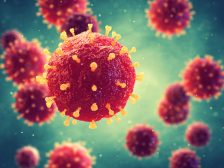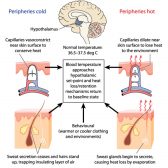Animal Water Regulation

Animals have various adaptations for water regulation. Squirrels (“Sciurus vulgaris”), for instance, can be seen roaming the forest in the morning and late afternoon. At midday, they rest in their nests to avoid the extreme heat during spring or summer.
Table of Contents
Homeostatic control, a set environment, and how evolution and natural selection drives a species to adapt to its environment are crucial to its survival. In more extreme ecosystems, these laws of nature are essential. These types of evolutionary changes are described below.
Anatomical
These types of changes in an organism affect its actual structure, for example, birds occupying islands further away from its natural habitat may evolve to grow longer wings over time due to its more remote nature.
Physiological
Physiological changes are changes in the actual biological processes of an organism, for example, over millions of years, mammals, though diversifying, developed different limbs to suit the way they operate in an environment, such as the nimble fingers that a human possesses, for skills such as typing via the adapted pentadactyl limb that we possess.
Behavioural

Changes in the way an organism responds and interacts with its external environment. This is illustrated by the kangaroo water rat, an organism that hibernates during hot periods of the day to conserve water. This is an example of a behavioural adaptation in response to the prevailing conditions of the environment
This is called dormancy, where all unnecessary actions and reactions (i.e. moving) are restricted to preserve the limited resources and foodstuff available to them. In such ecosystems, organisms must pay close attention to how they direct the resource of water in their body. Here is why the many possible ways we lose water from our bodies. Surprisingly, much of the water we lose from our daily intake is from respiration, as when we breathe out, water also accompanies the waste CO2.
Reasons for Adaptation
All in all, these changes are necessary for an organism, and its species to survive in a particular ecosystem. Animals (and plants) that live in an aquatic environment over time have become suited to their habitat. To other animals, this would be a problem, you may notice if you stay in the bath or swim underwater for a long period of time that your hands and feet become wrinkled. This is because osmosis is occurring between you and the aquatic environment.
The higher concentration in the external environment means that the concentration gradient of osmosis must even out, therefore the cells in our hands and feet become turgid (a higher than normal concentration of water). With this in hand, aquatic animals must perform osmoregulation to ensure that their body’s internal environment remains at its optimum level. Take note that osmosis will always occur until there is an equilibrium between the internal and external environment (isotonic concentration). Our genomes’ are used to dry environments, so this deviation from our body’s norm can indeed indicate that we are less suited to surviving in a water environment because we are not adapted to do so anymore, unlike our distant ancestors.
In regards to organisms in a freshwater habitat, they face the problem of continuous osmosis of water into their bodies, because their body is hypotonic in comparison to their external environment. This means that water will continue to diffuse into the fish until there is an isotonic concentration between the two environments. Since the fish would not be able to operate with such a high concentration of water in their system, evolutionary adaptations have overcome this problem. The kidneys which deal with the uptake of water are suited to their function, as the glomerulus’ of the kidney has a large surface area to reduce the concentration of water in the blood. As these kidney tubules allow a large scale movements of ions out of the bloodstream, the organism needs to reabsorb some important ions such as salt back into the bloodstream via active transport.
You can relate this osmoregulation to the way glycogen is stored in the kidney of humans, as the homeostatic controls involved with this area are there primarily to ensure that the conditions inside the organism are suited to the demands put upon it. Excess water within such an organism would damage the internal organs of it beyond repair by damaging the cell membrane and organelles due to the pressure caused by the water.
The opposite problem exists in animals that live in the ocean, where the salty water means that water is at a lower concentration than most organisms. The result here is that the organism is hypertonic to its external environment (has a higher water concentration), and must re-absorb water to remain in a healthy state. Evolutionary adaptation has also favoured these animals, and the kidneys have been anatomically altered over time to ensure the long-term survival of such organisms. The glomeruli in such organisms have a much smaller surface area, because the need to excrete ions into its external environment is not as extreme, because most water needs to be retained for survival, unlike freshwater organisms. Little salt needs to be re-absorbed due to the fact the salt-water environment can be drunk, and therefore is not as scarce as it would be for a freshwater organism.
The key point is that these organisms need to maintain an optimum water concentration in their internal environment to continue to function normally and optimally.
In more extreme environments, such as the desert, water is scarce and water must be stored in times of need, hence a camel humps.
Much water can be lost via sweat, under extremely hot weather or strenuous exercise
Excretion via urine and faeces also accounts for much of our water loss
Water is also required by many of our biological processes, and is, therefore, an exhaustible resource for these continuing processes.
Behavioural adaptations come into play here, as some species, such as the kangaroo rat lay in long periods of dormancy when the weather is hot, which would result in the rat losing more water through respiration than it can afford. The rat lays dormant underground in moist conditions where the concentration in water in the air and the rat’s lungs are at their minimum, therefore the least amount of water is lost to the external environment.
All these adaptations are designed for the organisms to survive more tolerably in their present habitat, and without these evolutionary changes, some of the species on the planet may not have survived to this point.
You will also like...

Ecology & Biodiversity: New Zealand Flora & Fauna
New Zealand is known for its unique biodiversity, caused by its remarkable geography and geologic history. Breaking away..

Hormone Production
Hormones are chemical messengers produced by specialized glands and they were produced by switching on the genes designe..

Biological Viruses
Viruses possess both living and non-living characteristics. This unique feature distinguishes them from other organisms...

The Gene Pool and Population Genetics
According to Charles Darwin's theory of natural selection, preferable genes are favored by nature in the gene pool, and ..

Temperature Regulation in Animals
This tutorial elucidates body temperature regulation. Know the details here to learn how the body sets the body temperat..

Growth and Development of a Human Baby
Upon fertilization, a zygote forms and develops into an embryo. This tutorial elaborates on the growth and development f..
